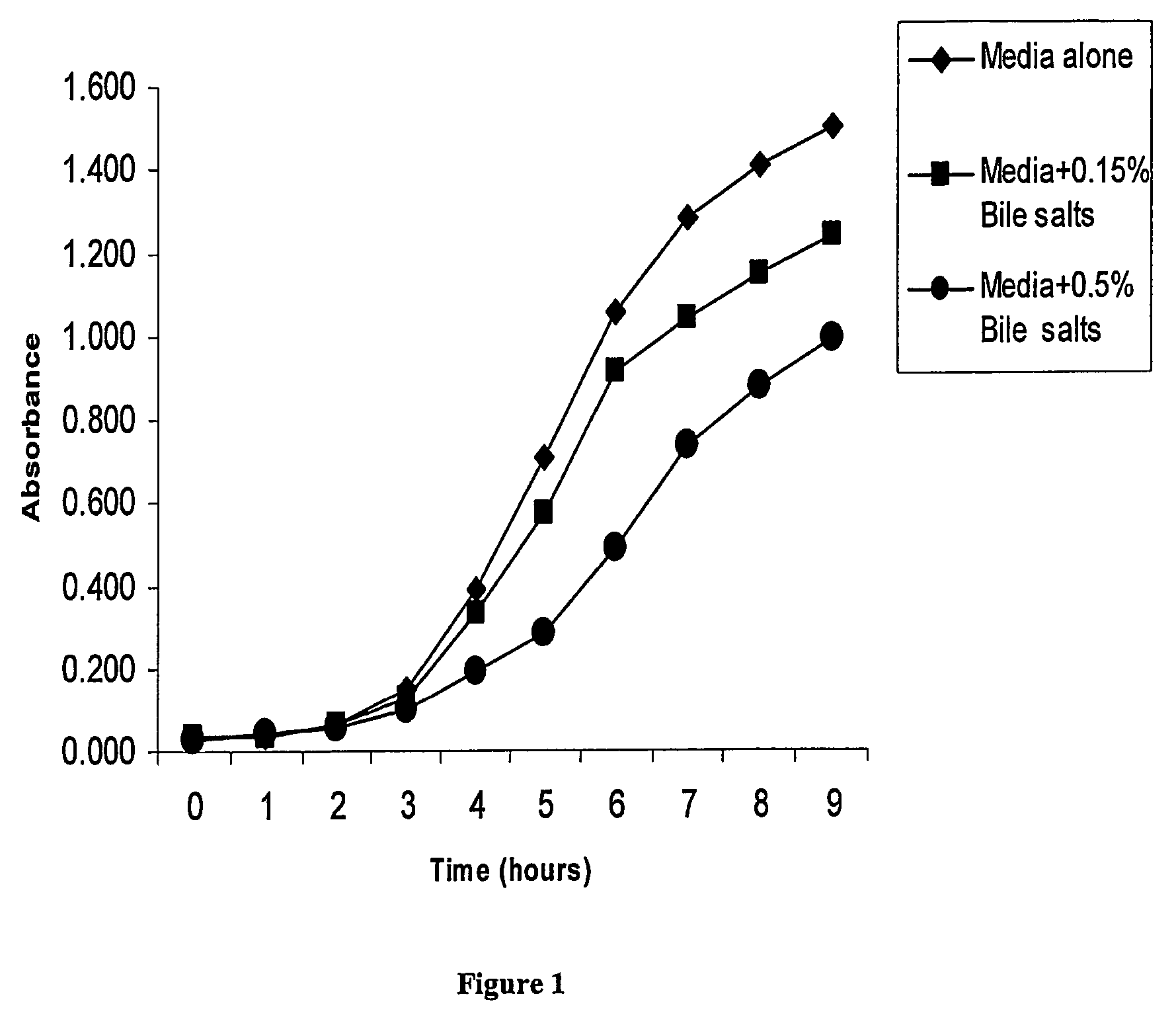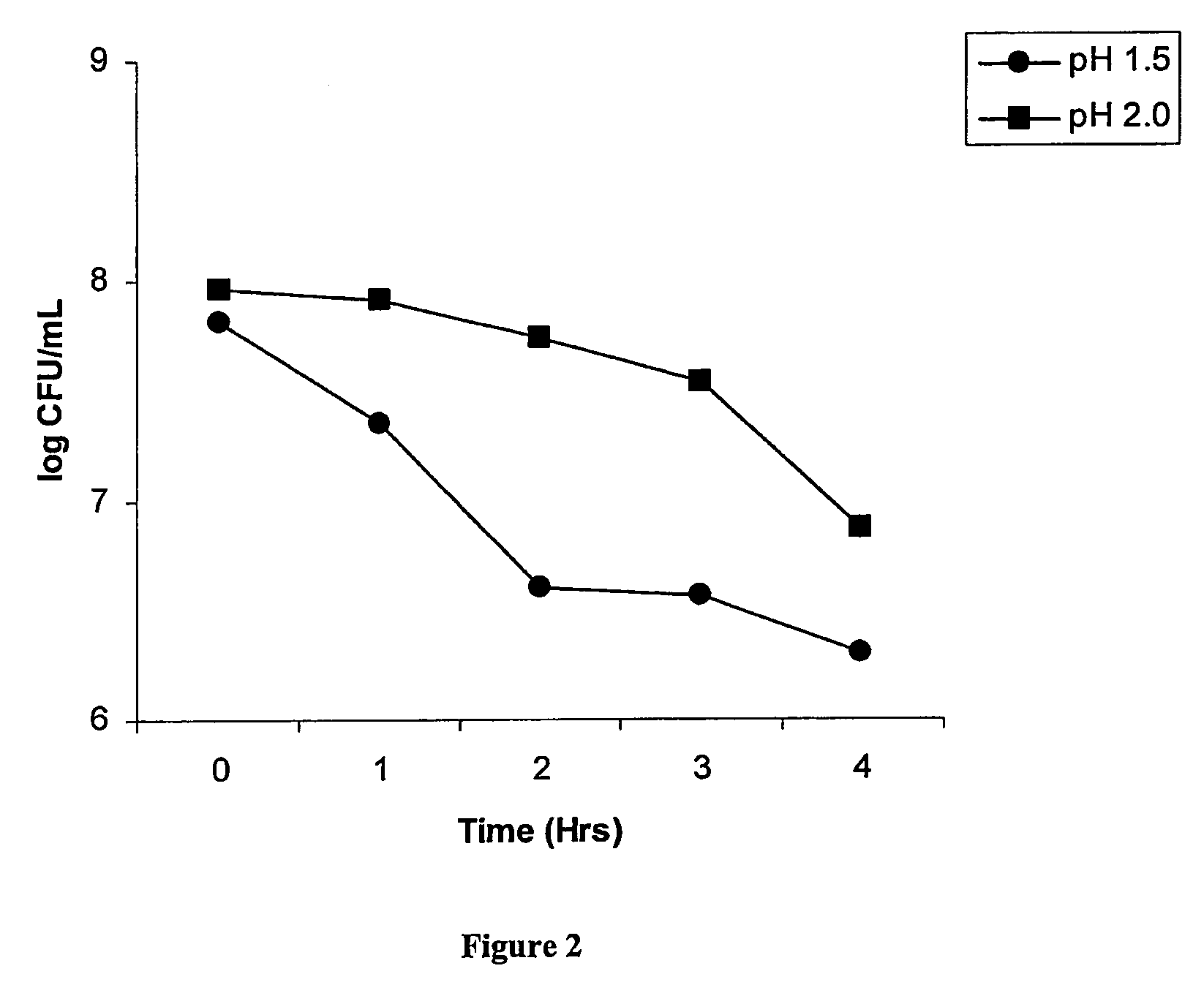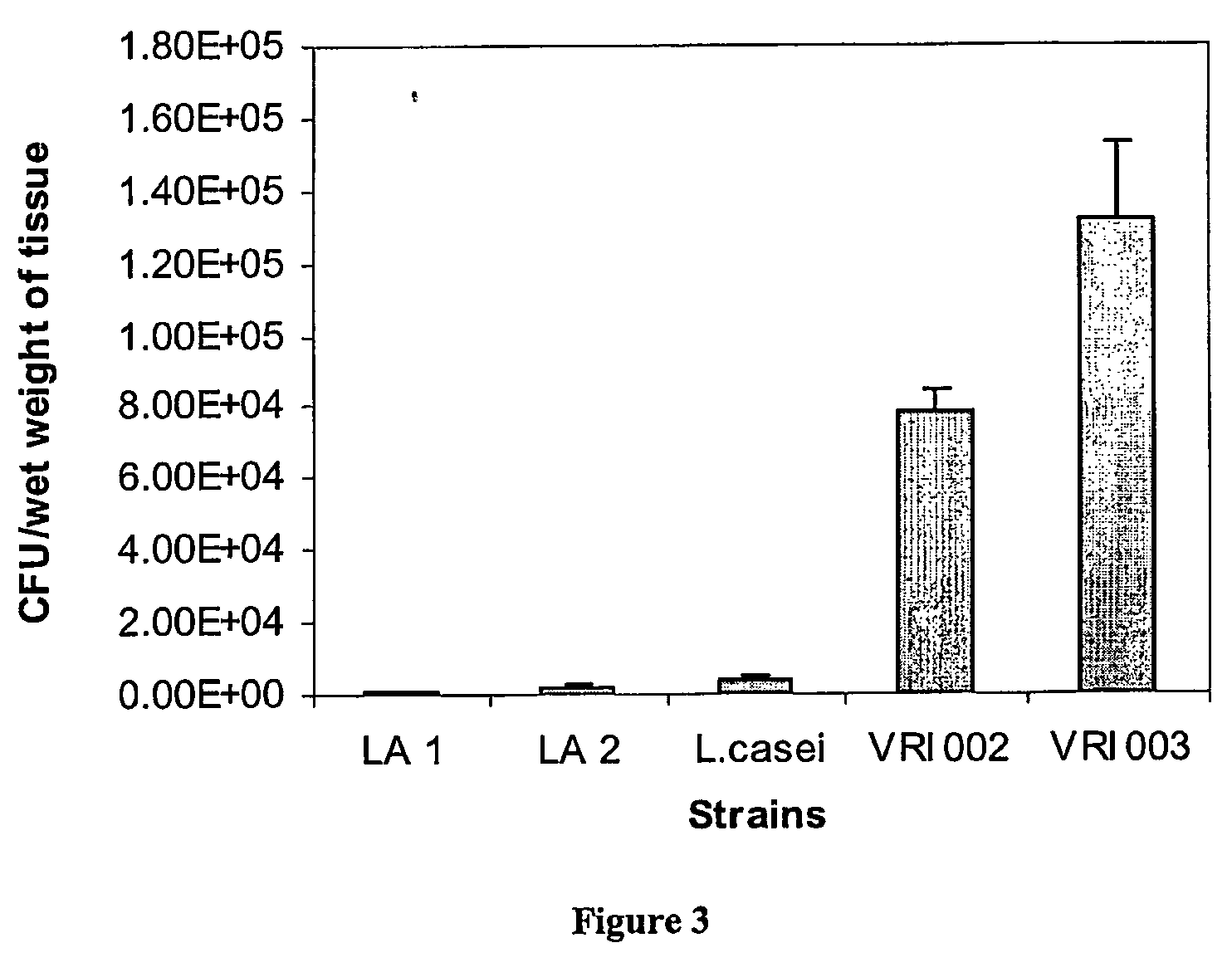Probiotic bacterium: lactobacillus fermentum
a technology of lactobacillus and fermentum, which is applied in the field of probiotic bacterium lactobacillus fermentum, can solve the problems of normal dormant organisms, loss of balance between host and indigenous flora, and inability to maintain normal flora, etc., and achieves advantageous inmunomodulatory effects and preventive and/or treatment.
- Summary
- Abstract
- Description
- Claims
- Application Information
AI Technical Summary
Benefits of technology
Problems solved by technology
Method used
Image
Examples
example 1
Origin and Identification
[0085] The VRI 003 variant was isolated from a healthy subject. In a series of laboratory experiments, the VRI 003 variant was found to adhere to the gastrointestinal epithelial tissue. It was also shown to have a demonstrable effect on human gastrointestinal pathogens, and was resistant to bile acids. The VRI 003 variant also survived in a low pH environment and was resistant to pepsin and to nutrient limited conditions.
[0086] The bacterial variant VRI 003 can be cultured on Rogosa agar (Oxoid) Plates were incubated at 37 C in an anaerobic chamber for 24 hours. The strain was purified by successive transfers on MRS agar (Oxoid) plates incubated at 37 C in an anaerobic chamber for 24 hours and the final culture stored at −70° C. in 20% glycerol by subculturing in MRS broth at 37 C for 24 hours in anaerobic conditions prior to the addition of glycerol to the culture broth.
[0087] Variant VRI 003 was a catalase negative, Gram positive rod which produced gas ...
example 2
Characteristics and Description of Strain VRI 003
[0089] When grown on MRS (Oxoid) agar in an anaerobic chamber at 37 C, the colonies are approximately 1 mm in diameter, shiny, dome shaped, opaque and when touched with a loop show a stickiness. This stickiness may be due to the presence of an extracellular polymer. Incubation of similar plates in aerobic conditions at 37 C yields some colonies of rough appearance and irregular edge. Subculturing of these rough colonies onto MRS agar and incubation at 37 C in the anaerobic chamber yields opaque dome shaped, shiny opaque colonies that are sticky to touch.
(ii) Growth in Broth
[0090] The culture of variant VRI 003 in MRS (Oxoid) broth, or in various other-broths, results in a viscous broth when grown at 37 □ C in anaerobic conditions.
(iii) Resistance to Bile Acids
[0091] As shown in FIG. 1, strain VRI 003 grows in the presence of 0.5% and 0.15% bile salts when acids were added to MRS broth (Oxoid) and the stai...
example 3
Culture and Formulations
(i) Growth of the Culture
[0125]Lactobacillus fermentum variant VRI 003 is grown in a fermentation vessel at 37° C. The vessel is then cooled and the fermentation broth concentrated, preferably by centrifugation. The collected culture is dried, preferably by freeze-drying and subsequently milled. The milled material is then blended with the major excipient to give the desired level of microbes per gram of dry material. The level to be used is dependent on the application (range up to log 11 per gram). The standardised material is then used in the formulation by mixing all ingredients in a blender (preferably a V-blender).
(ii) Formulations
[0126] (a) Formulation A: High amylase maize based (symbiotic formulation)
Lactobacillus fermentum VRI 003100mgHi-maize 958 (or 1043)170mgStearic acidup to 4.5mgSilica dioxideup to 4.5mg
[0127] (b) Formulation B: Microcrystalline cellulose (MCC) based
Lactobacillus fermentum VRI 003100mgAvicell Ph 112 (or equivalent)170...
PUM
 Login to View More
Login to View More Abstract
Description
Claims
Application Information
 Login to View More
Login to View More - R&D
- Intellectual Property
- Life Sciences
- Materials
- Tech Scout
- Unparalleled Data Quality
- Higher Quality Content
- 60% Fewer Hallucinations
Browse by: Latest US Patents, China's latest patents, Technical Efficacy Thesaurus, Application Domain, Technology Topic, Popular Technical Reports.
© 2025 PatSnap. All rights reserved.Legal|Privacy policy|Modern Slavery Act Transparency Statement|Sitemap|About US| Contact US: help@patsnap.com



